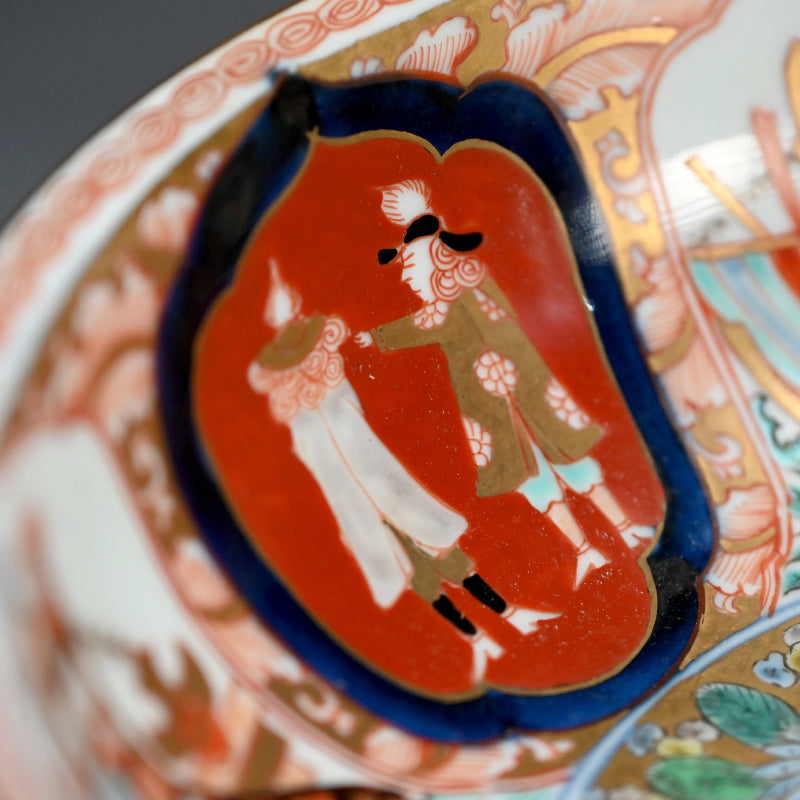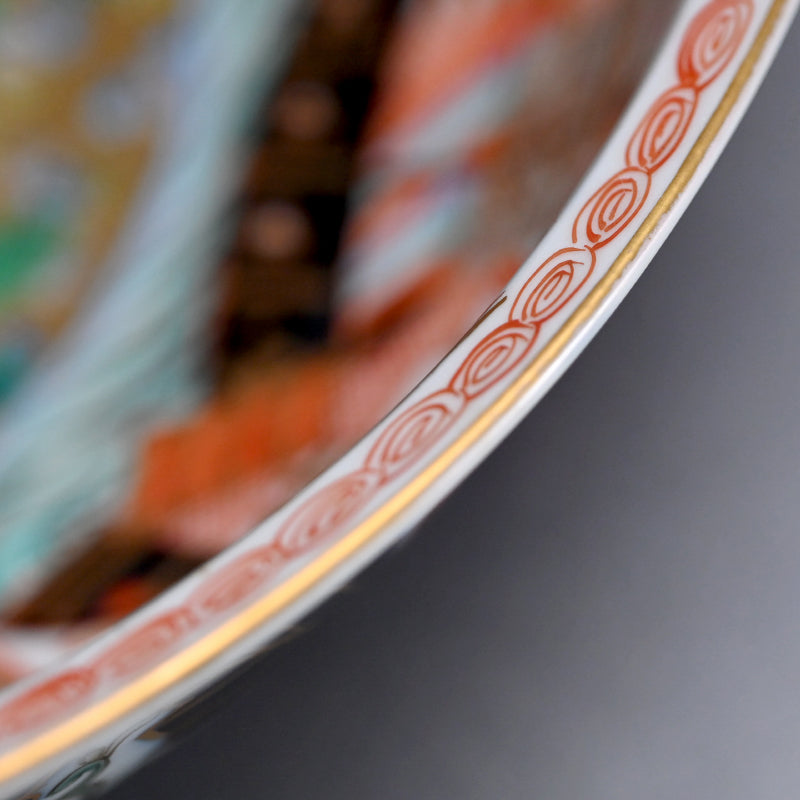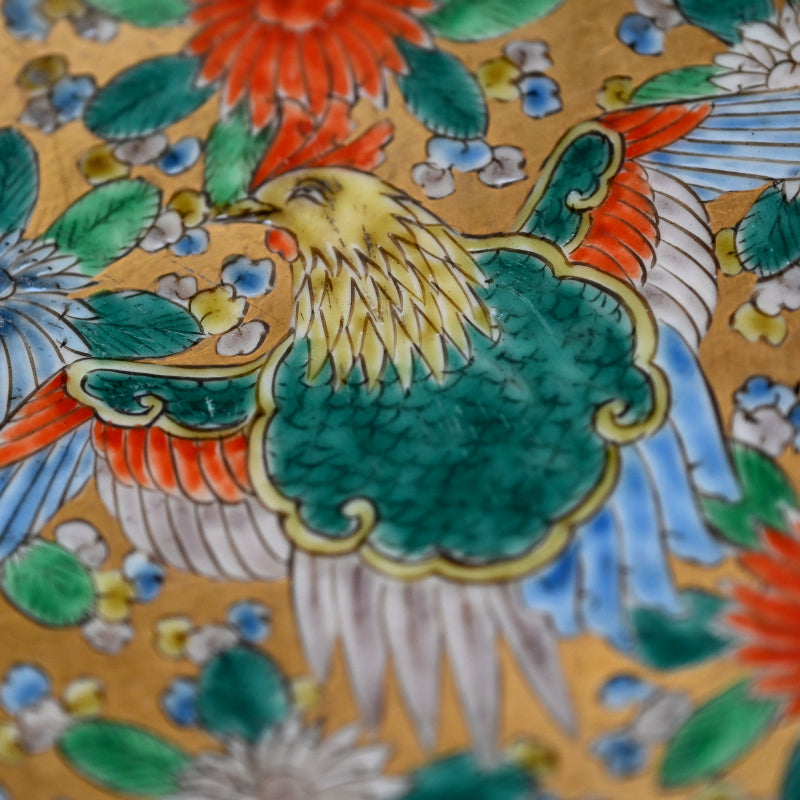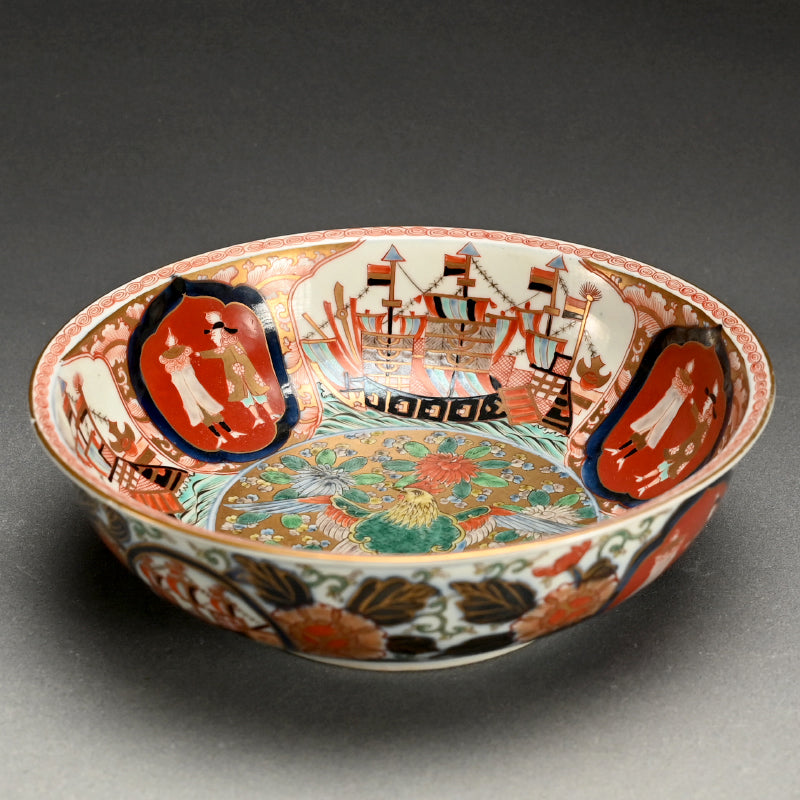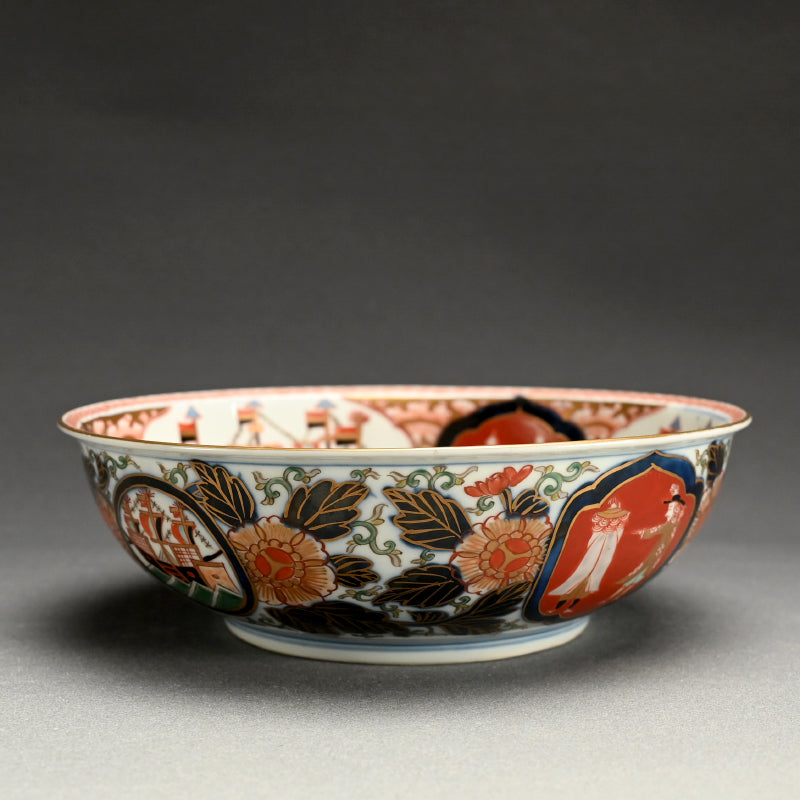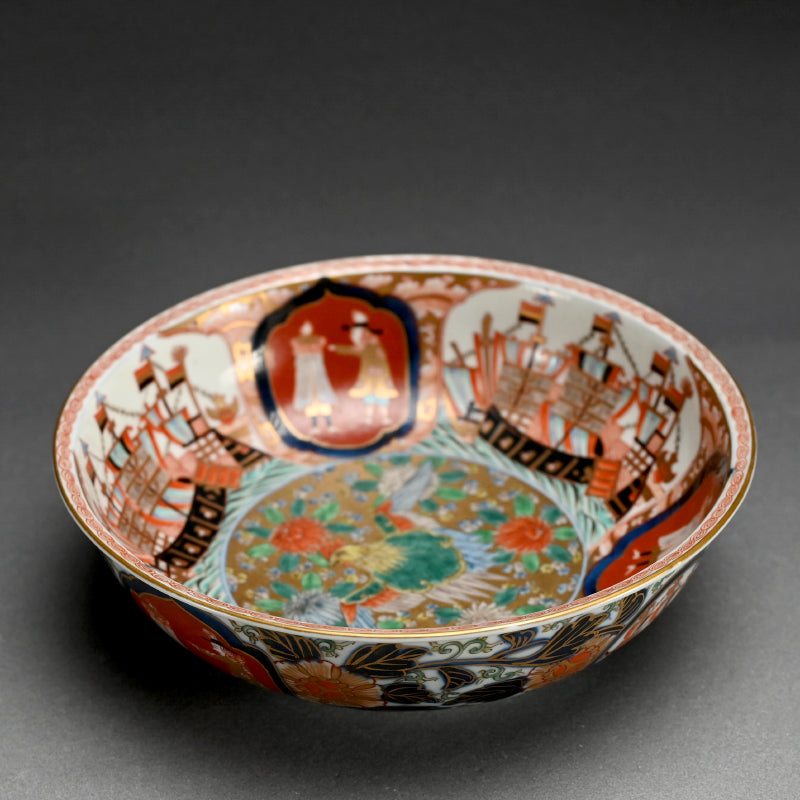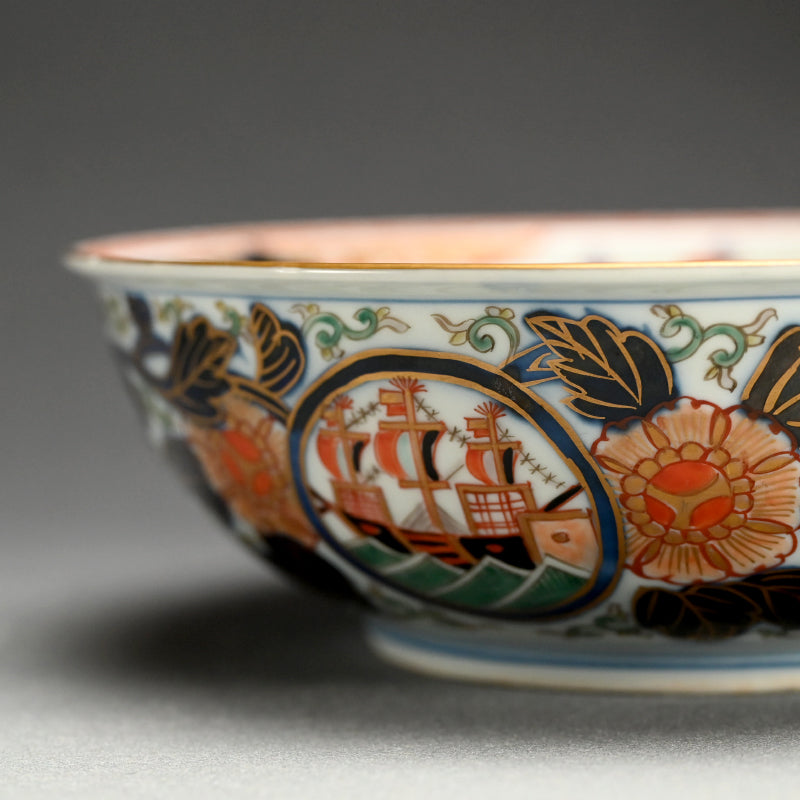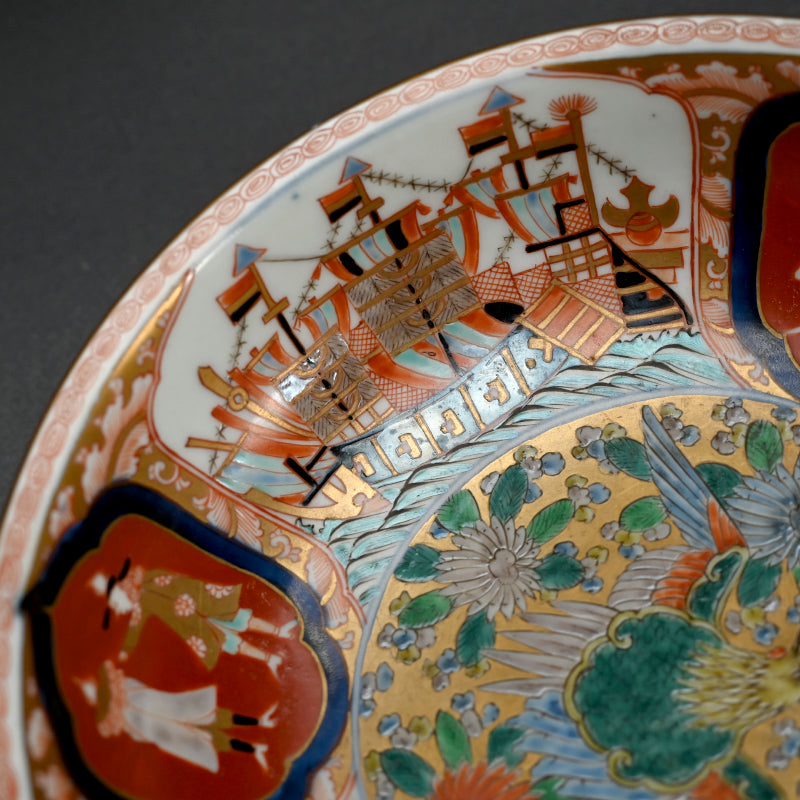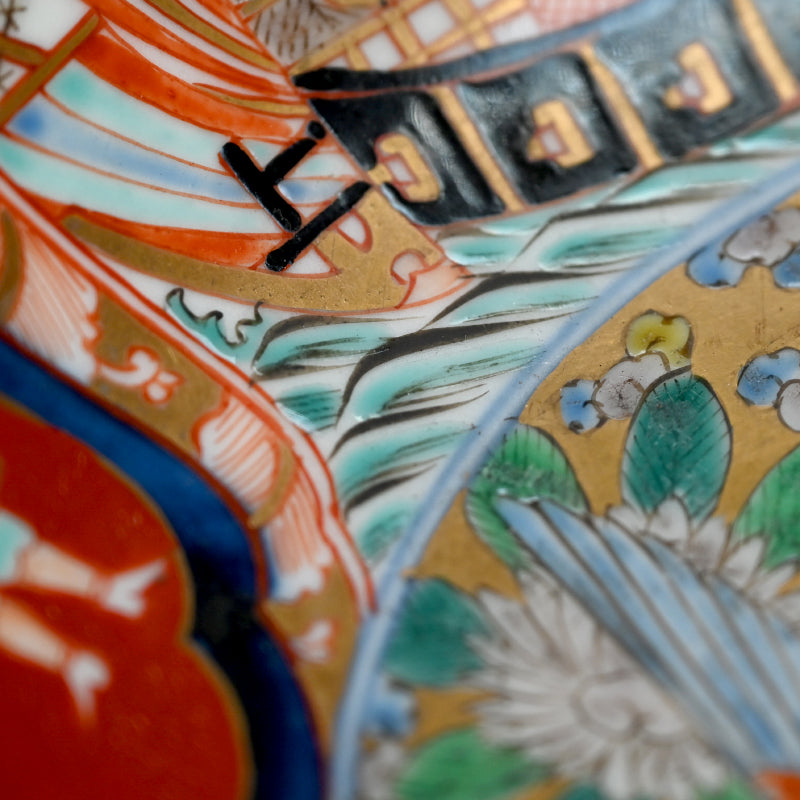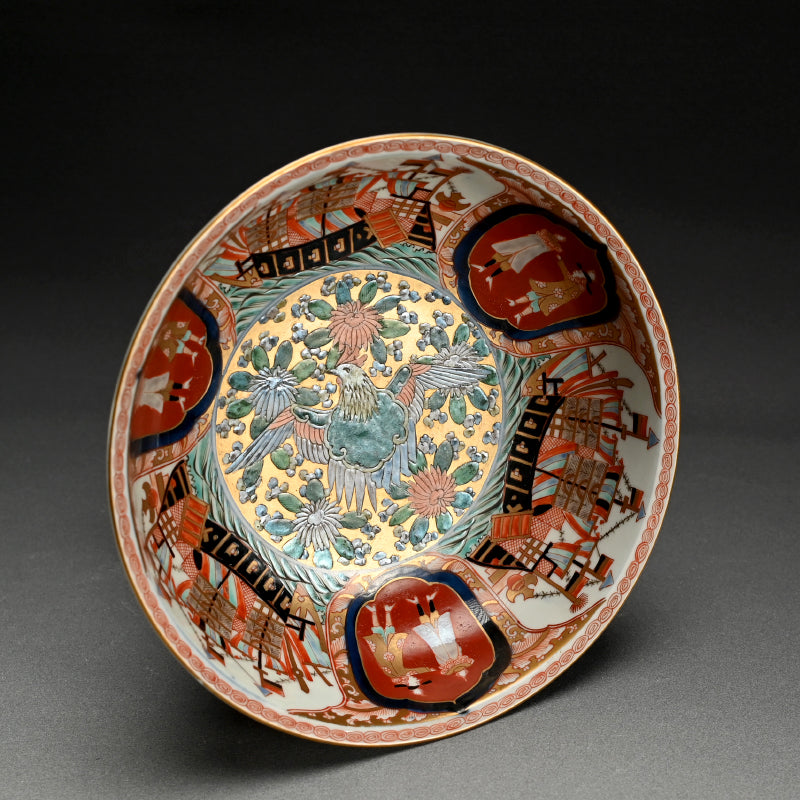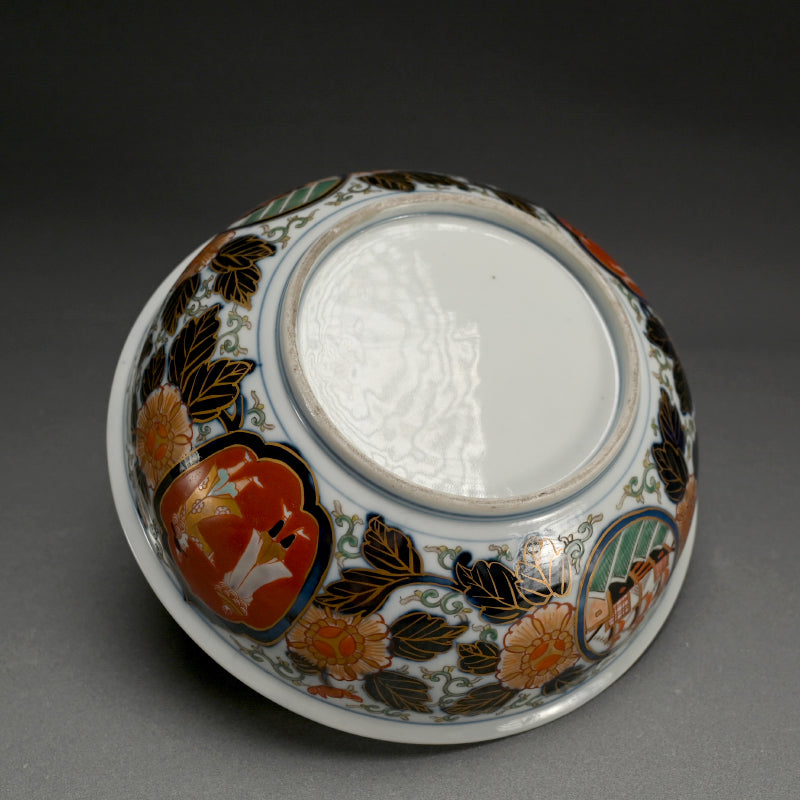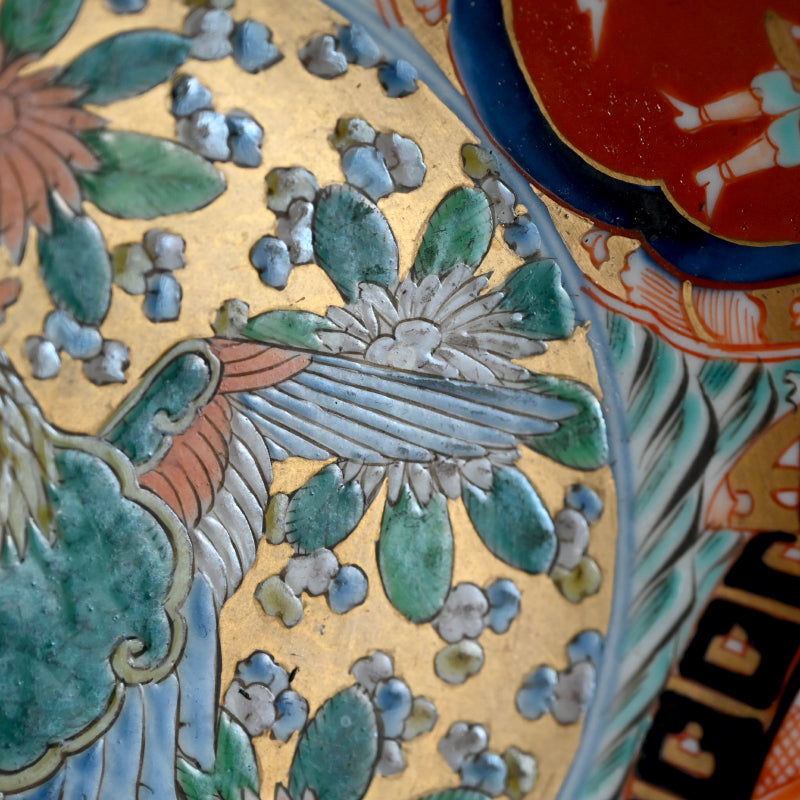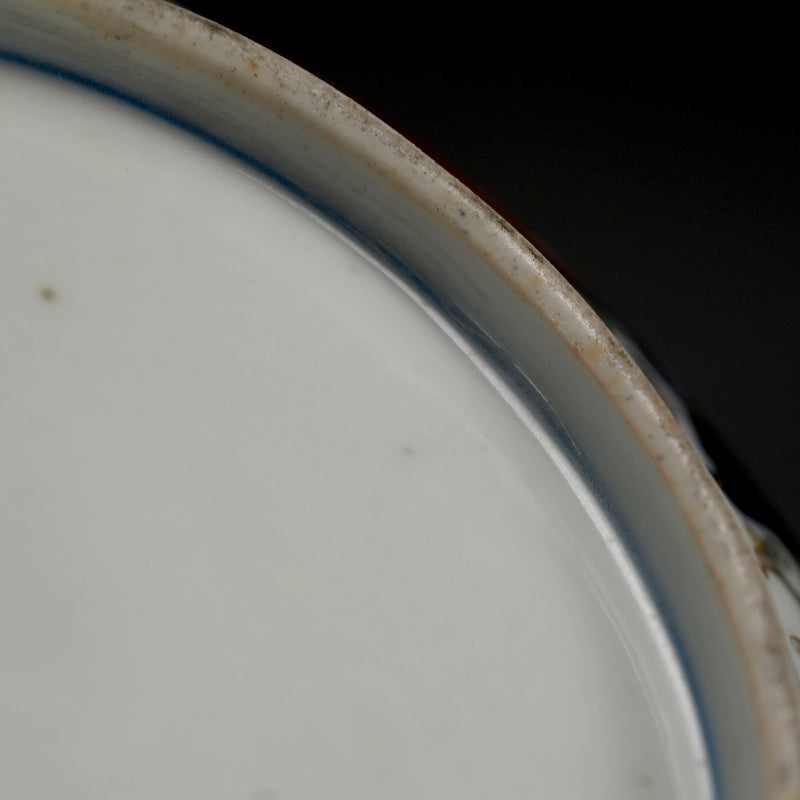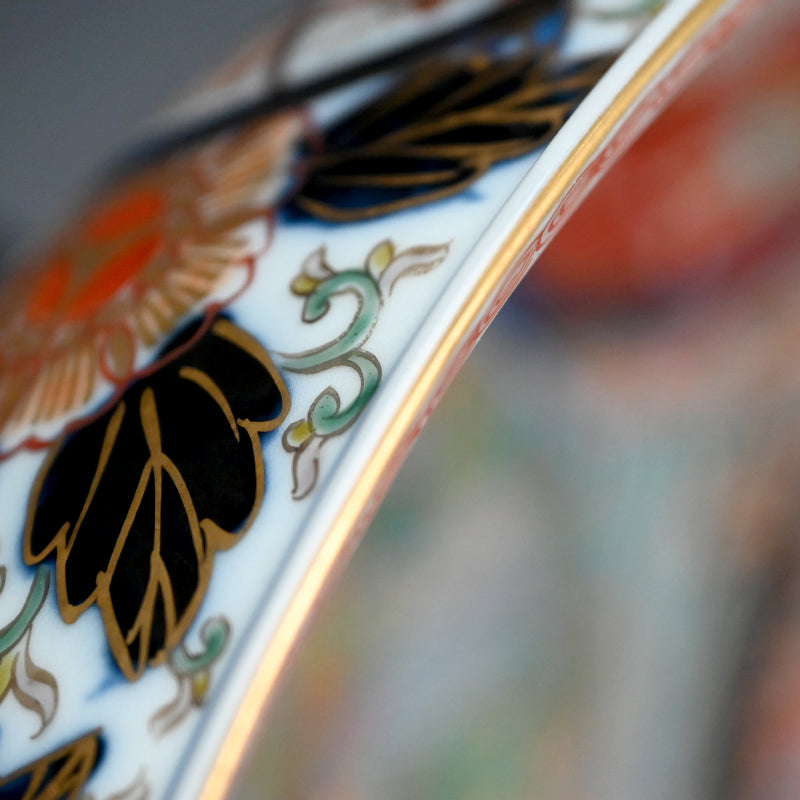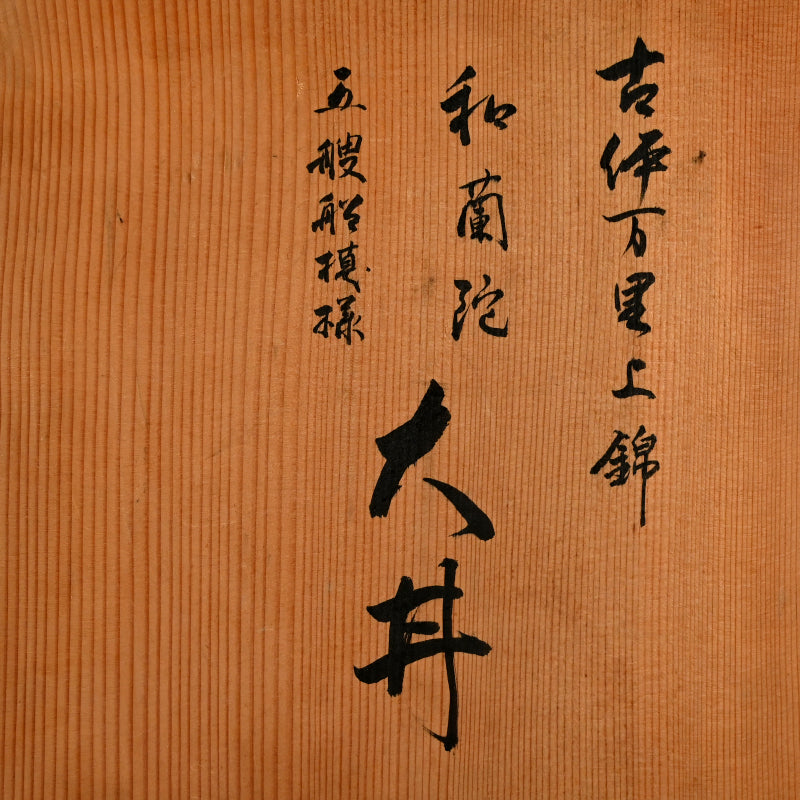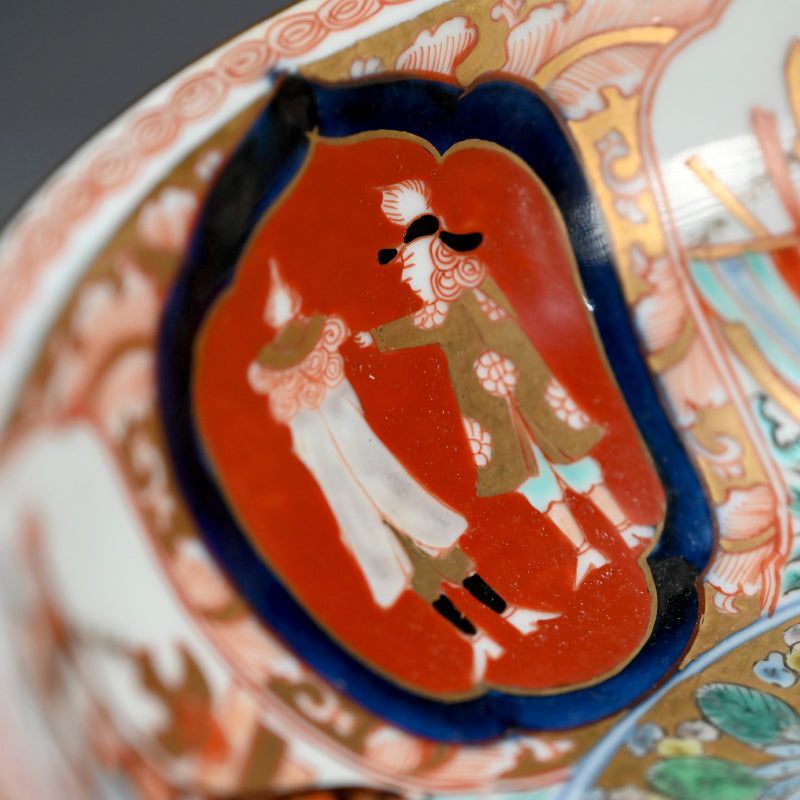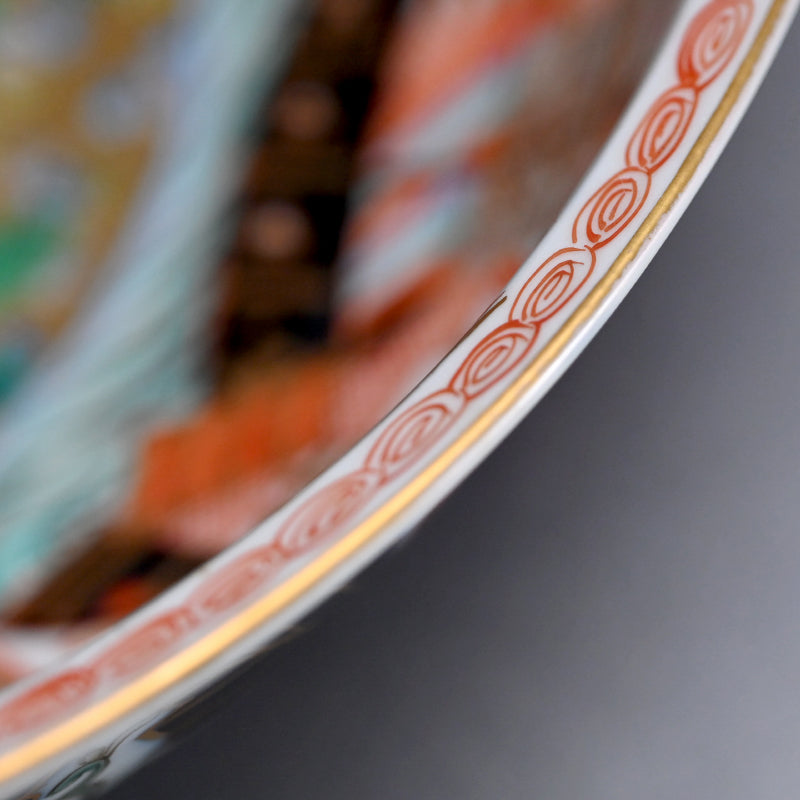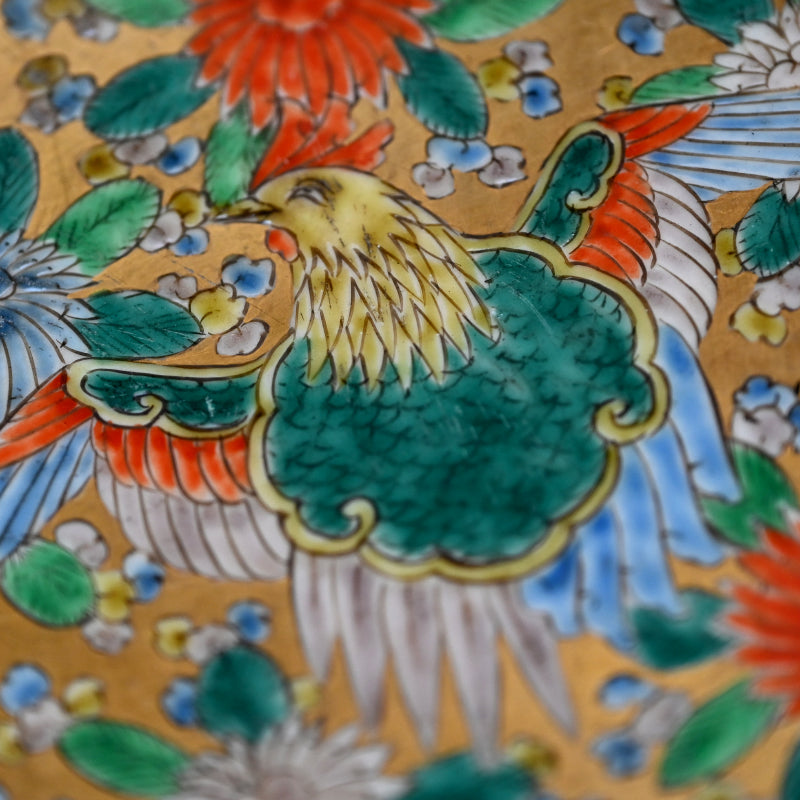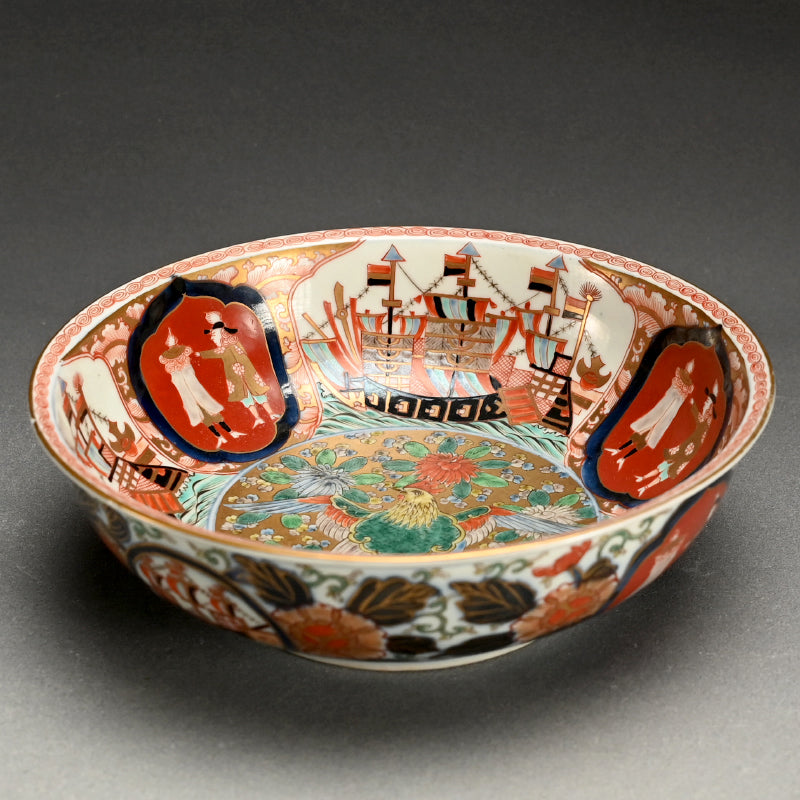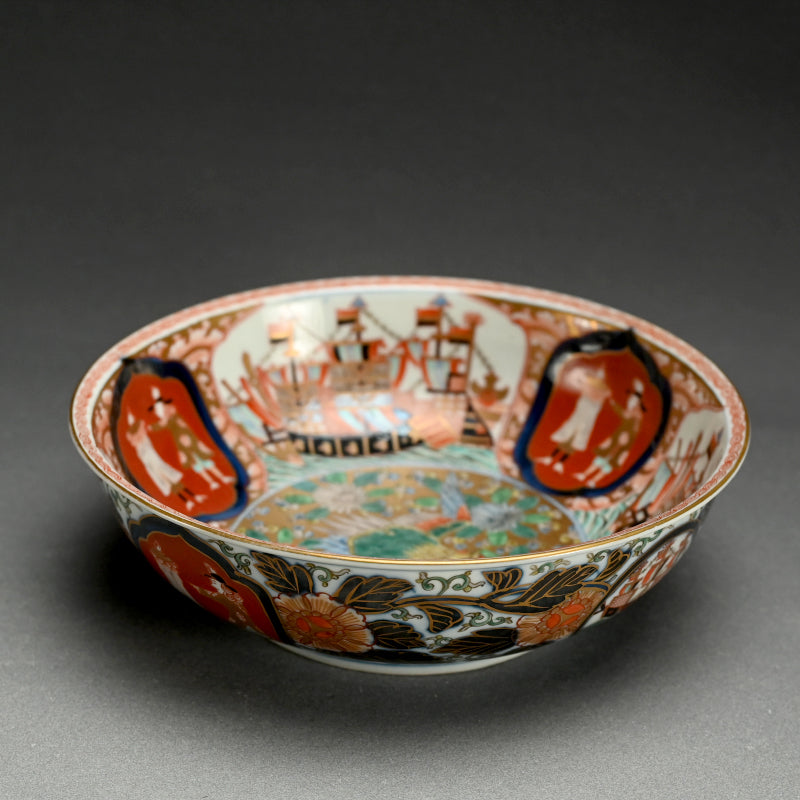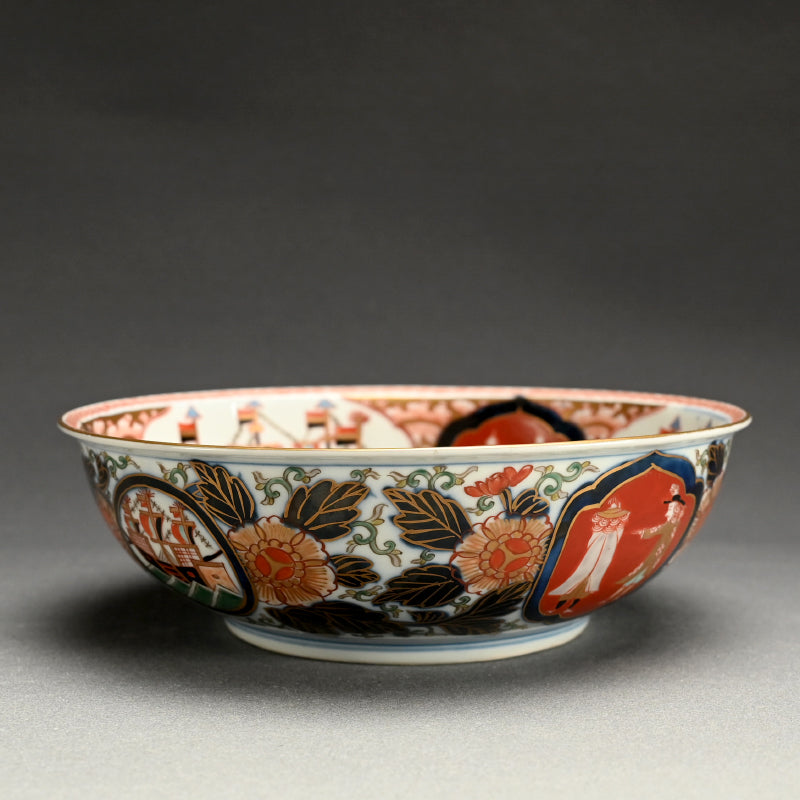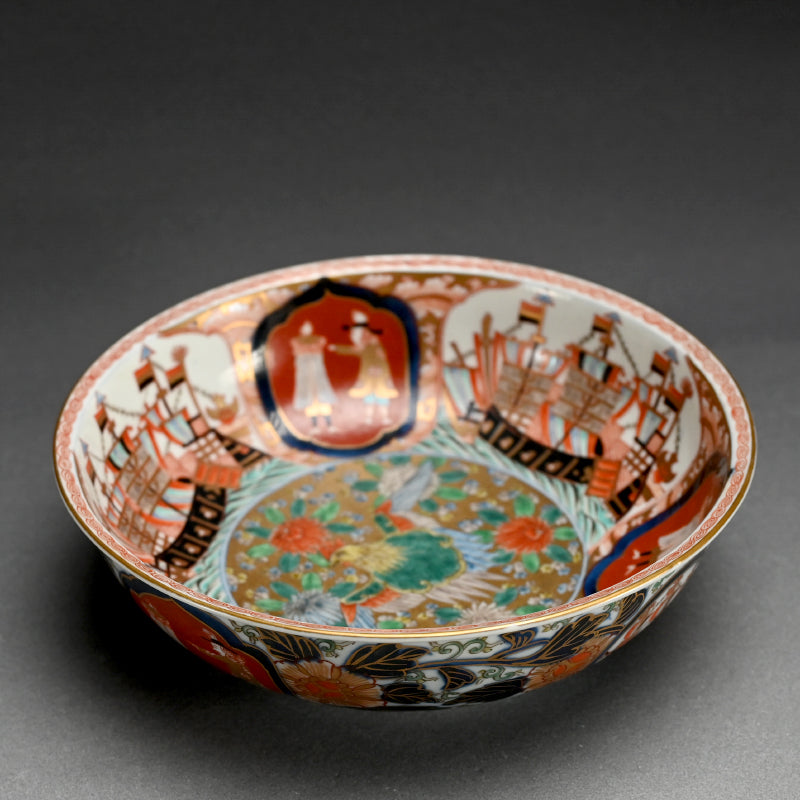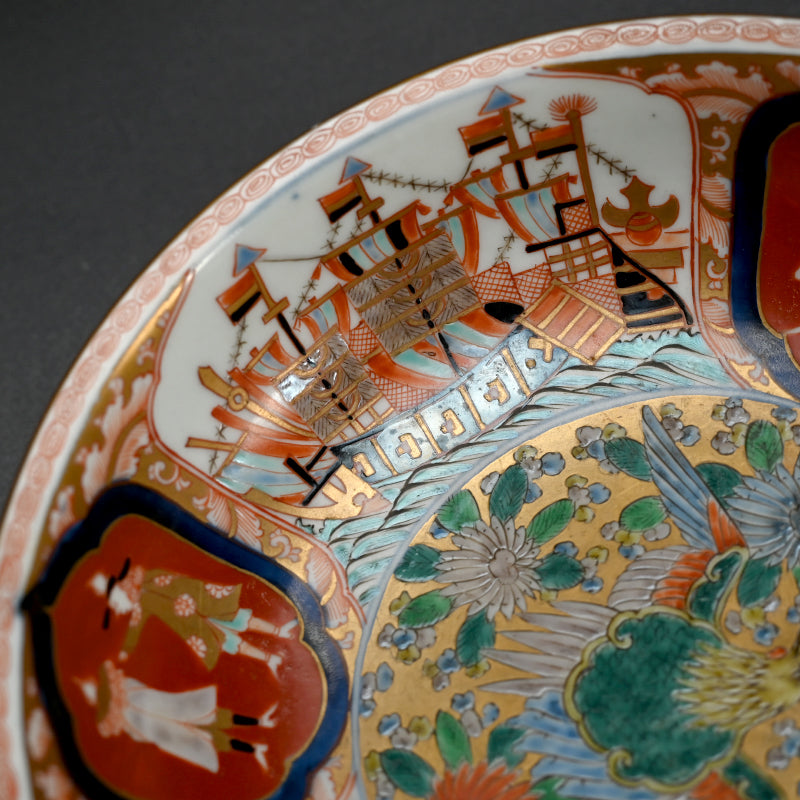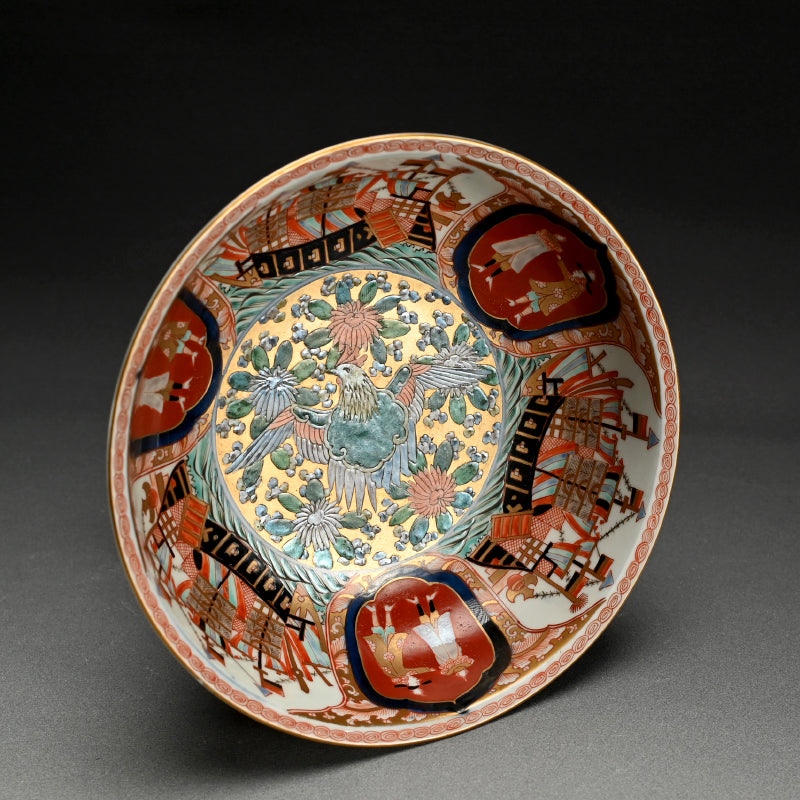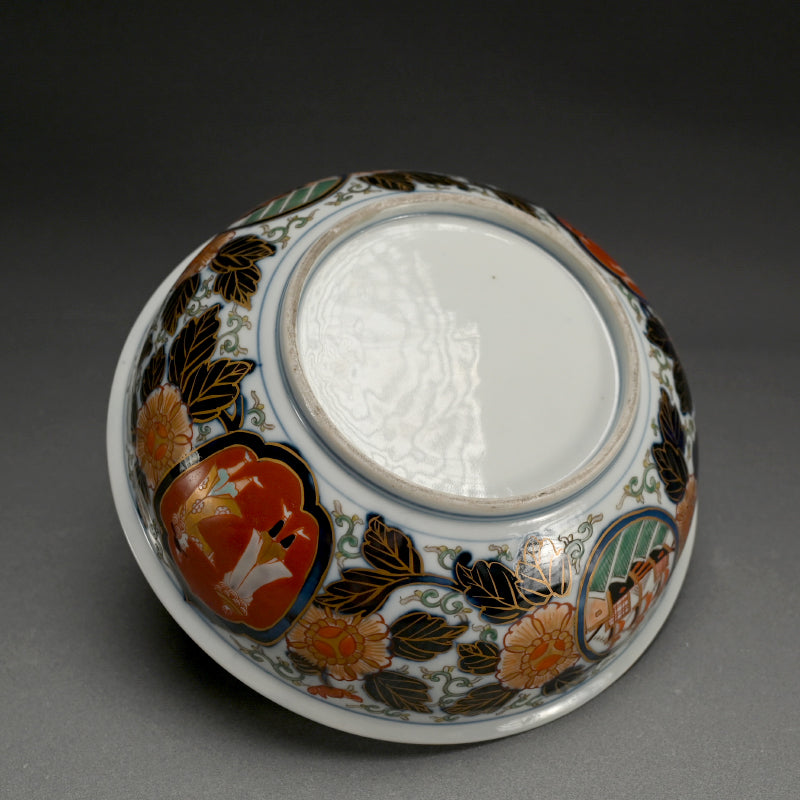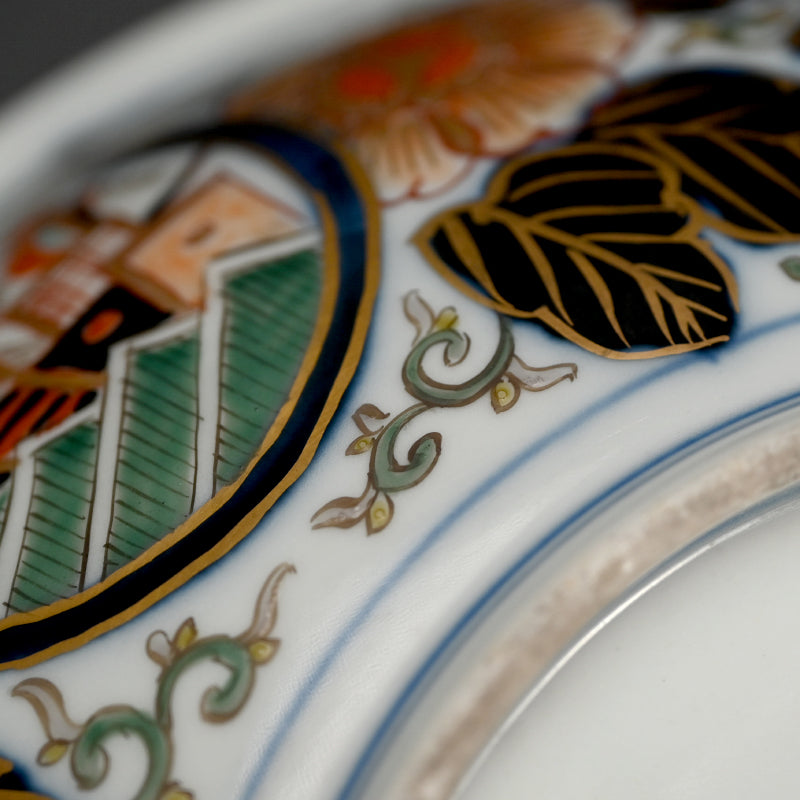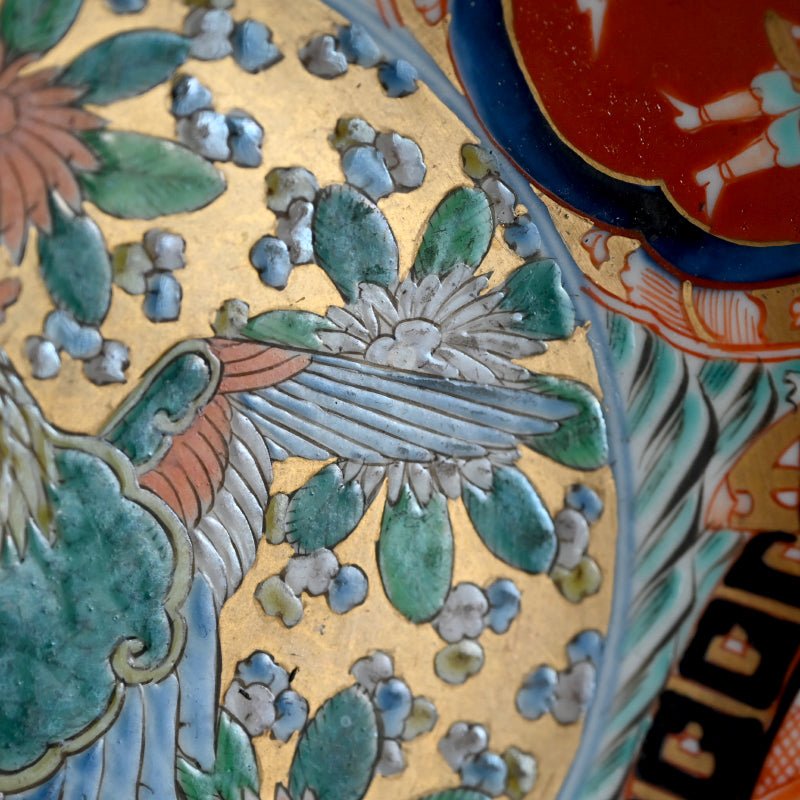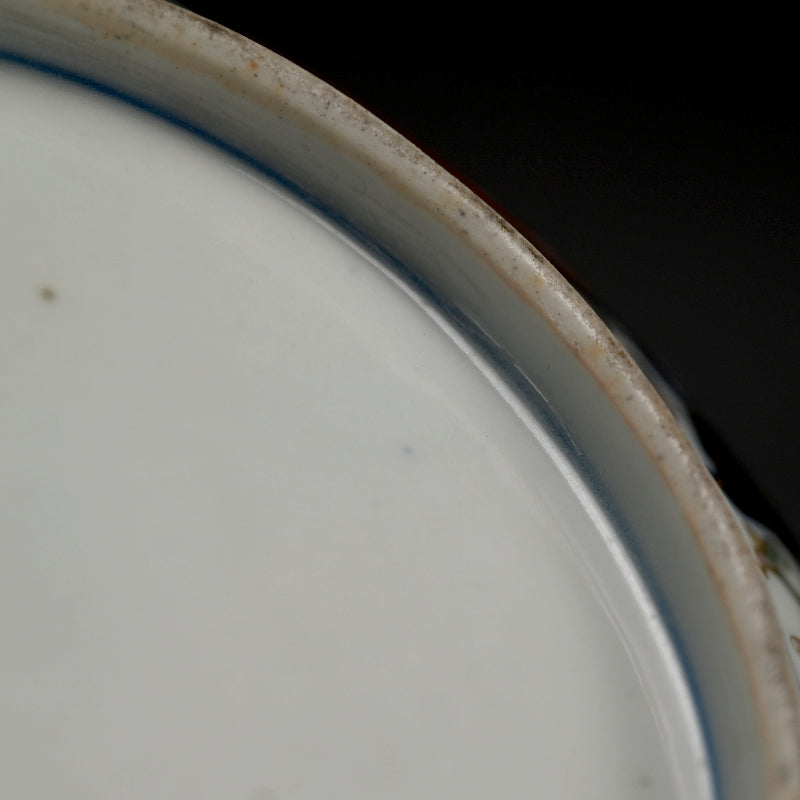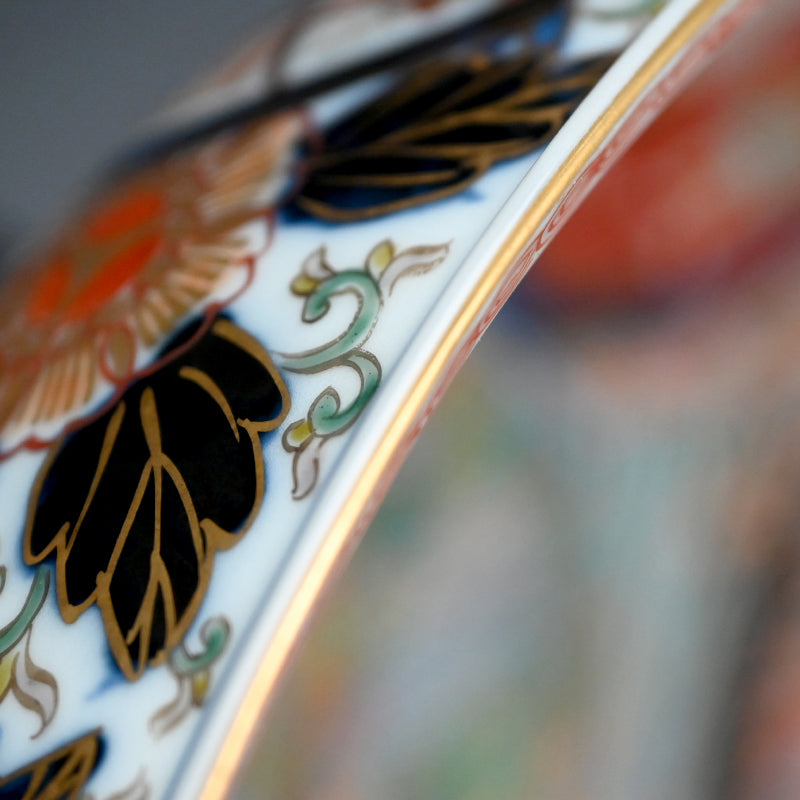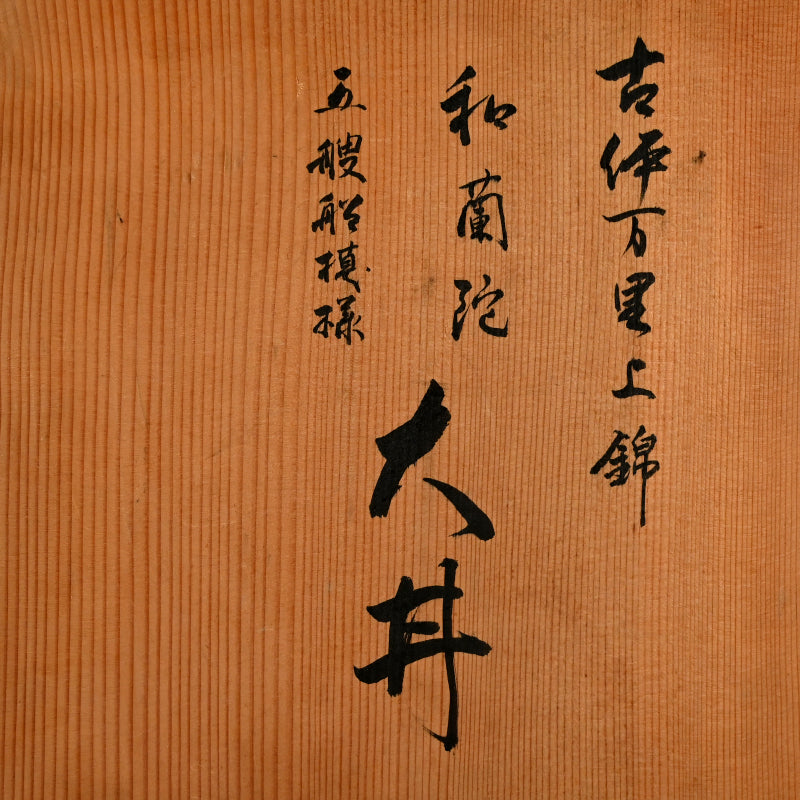Nanban Dutchmen on Porcelain Imari Bowl
Nanban Dutchmen on Porcelain Imari Bowl
Item Code: K691
Couldn't load pickup availability
A brightly colored porcelain bowl dating from the 19th century decorated with a large central golden dial dominated by a phoenix among florals surrounded by a diaper of bold reds and blacks featuring black Dutch ships and Nanbanjin (Dutchmen). The bowl is 27 cm (11 inches) diameter), 8.5 cm (3-1/2 inches Tall and in excellent condition.
During the sakoku (isolation) era of Japanese history (1639–1853), the Dutch ships that visited the port of Nagasaki were the only Westerners permitted to trade with Japan. Their trade was confined to a small artificial island in Nagasaki harbor called Dejima, which acted as a closely monitored trading post. The Dutch ships arrived typically once or twice a year, bringing goods such as textiles, sugar, medicines, glassware, and scientific instruments which they would trade for Japanese silver, porcelain, and other local products. The Dutch traders were under strict surveillance and had limited contact with the Japanese population. They were required to adhere to Japanese rules, including cultural prohibitions such as refraining from Christian missionary activities. The Dutch served as Japan's primary source of information about the outside world during this isolation period. Dutch studies were termed “Rangaku" or "Dutch learning," encompassing Western sciences, medicine, and technology.
Share

